
Cossoidea is the superfamily of moths that includes carpenter moths and relatives. Like their likely sister group Sesioidea they are internal feeders and have spiny pupae with moveable segments to allow them to extrude out of their exit holes in stems and trunks during emergence of the adult.
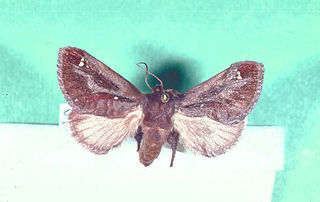
Acharia is a genus of moths in the family Limacodidae.

Parasa is a genus of moths of the family Limacodidae. It was described by Frederic Moore in 1860.

Talara is a genus of lichen moths in the family Erebidae. There are more than 40 described species in Talara, found in Central and South America.

Eudonia is a large and widespread genus in the grass moth family (Crambidae), subfamily Scopariinae. There is no common name for the roughly 250 species placed here; new species are still being described regularly. Although the genus was proposed early in the 19th century, many of these moths were for a long time retained in Scoparia, the type genus of the subfamily and a close relative of Eudonia. A few small genera have been proposed for separation from Eudonia, but given the size of this group this is not particularly convincing; thus, all are retained here pending a comprehensive phylogenetic review.

Scoparia is a grass moth genus of subfamily Scopariinae. Some authors have assigned the synonymous taxon Sineudonia to the snout moth family (Pyralidae), where all grass moths were once also included, but this seems to be in error.

Harrison Gray Dyar Jr. was an American entomologist. Dyar's Law, a pattern of geometric progression in the growth of insect parts, is named after him. He was also noted for eccentric pursuits which included digging tunnels under his home. He had a complicated personal life and along with his second wife he adopted the Baháʼí Faith.

Natada is a genus of moths of the family Limacodidae described by Francis Walker in 1855.
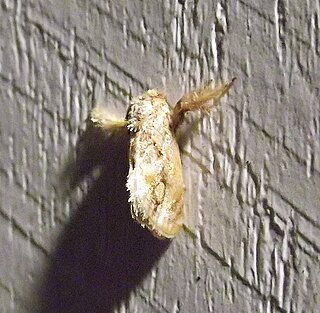
Isochaetes is a genus of Limacodid moths.
Epiclea is a genus of moths belonging to the family Limacodidae. Its exact sub-family has not currently been determined. The genus is found in Central America.

Acraga is a genus of moths of the family Dalceridae. The genus has neotropical distribution.

Packardia is a genus of moths in the family Limacodidae.
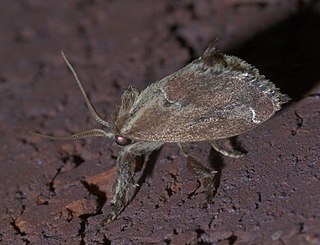
Adoneta is a genus of moths in the family Limacodidae. The genus was erected by James Brackenridge Clemens in 1860. There are at least four described species in Adoneta.

Lithacodes is a genus of slug caterpillar moths in the family Limacodidae. There are about five described species in Lithacodes.
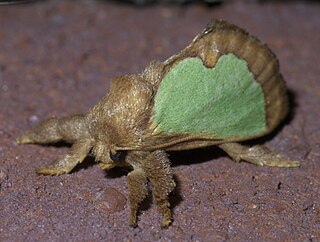
Euclea is a genus of moths in the family Limacodidae. The genus was erected by Jacob Hübner in 1819. There are at least 40 described species in Euclea.
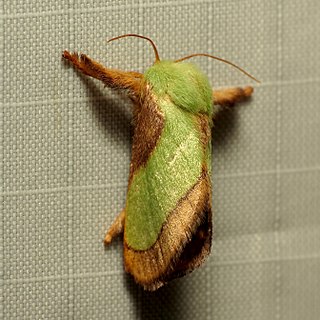
Parasa chloris, the smaller parasa, is a species of slug caterpillar moth in the family Limacodidae.

Prolimacodes is a genus of slug caterpillar moths in the moth family Limacodidae. The genus was erected by William Schaus in 1896. There are at least seven described species in Prolimacodes, found in North and Central America.

Euclea gajentaani is a moth in the family Limacodidae. The species was first described by entomologists Marc Epstein and Jorge Corrales in 2004. The species was named for Henricus Gajentaan, Ambassador of the Netherlands to Costa Rica.
Phobetron dyari is a species of slug caterpillar moths in the genus Phobetron and the family Limacodidae.

Isa is a genus of moths in the family Limacodidae. It has 5 species.

















